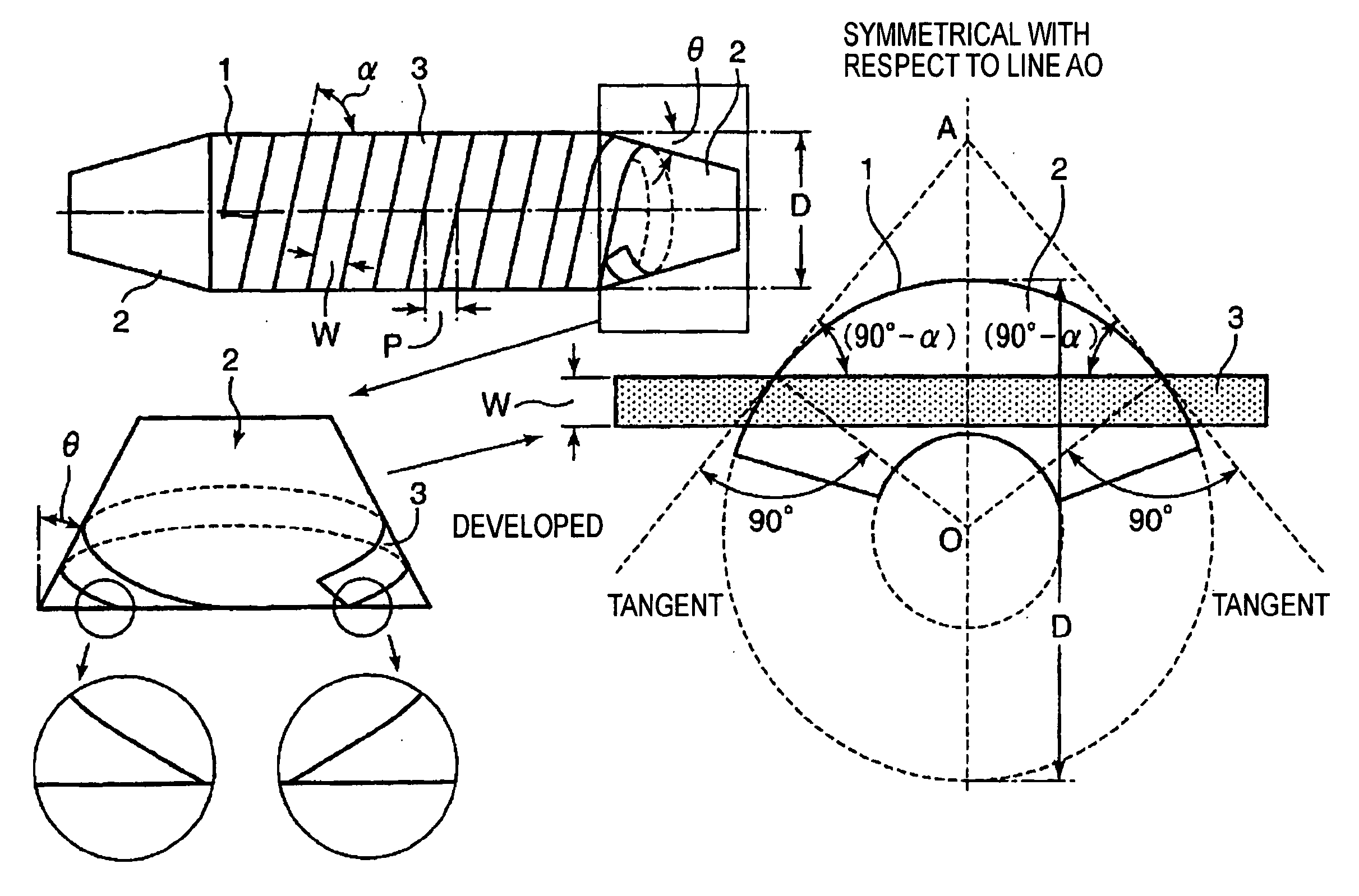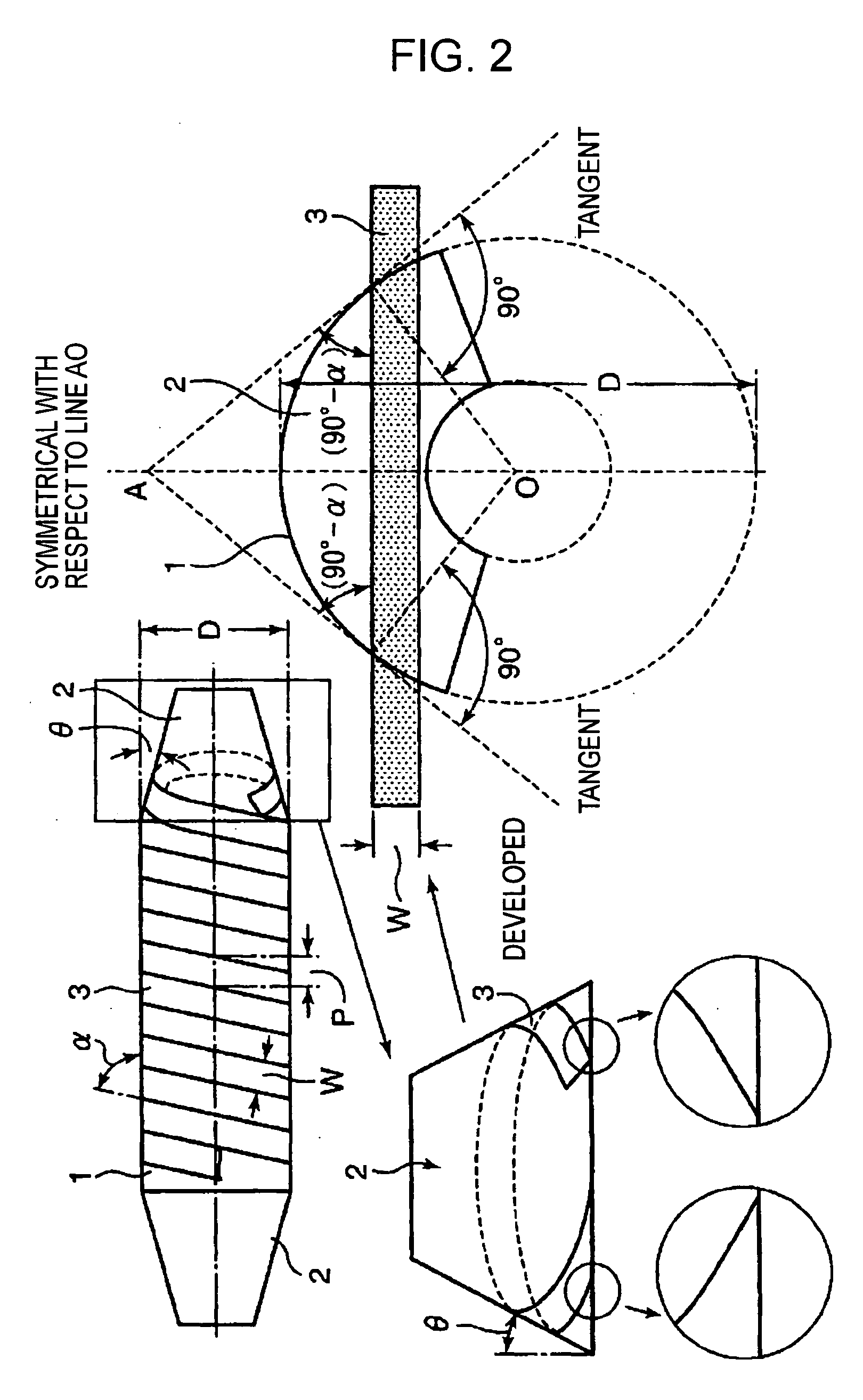Bobbin for superconducting coil, and superconducting solenoid coil
a superconducting coil and superconducting solenoid technology, applied in the direction of superconducting magnets/coils, magnetic bodies, instruments, etc., can solve the problems of easy shortening of oxygen inside the coil, serious distortion, and difficulty in insulating the coil, and achieves easy, smooth, and helically wound wound
- Summary
- Abstract
- Description
- Claims
- Application Information
AI Technical Summary
Benefits of technology
Problems solved by technology
Method used
Image
Examples
first example
[0044] A tape wire having a width W of 10 mm and a thickness t of 0.2 mm shown in FIG. 8 was closely and solenoidally wound around a bobbin having an outside diameter D of a cylindrical portion of 80 mm, a length L of 500 mm, and a taper angle θ of 30° at a helical winding angle α of 88° so that adjoining turns of the wire did not overlap with each other. The wire was wound from an end of the cylindrical portion to a tapered portion at an angle of 88° to form a first layer, and was wound back in tight contact with the tapered portion. The tape was then wound around the cylindrical portion at 88° in a direction opposite to that for the first layer, thereby forming a second layer. Consequently, the wire could be smoothly wound back to form the second layer while being in tight contact with the tapered portion.
second example
[0045] A tape wire having a width W of 10 mm and a thickness t of 0.2 mm shown in FIG. 10 was closely and solenoidally wound around a bobbin having an outside diameter D of a cylindrical portion of 80 mm, a length L of 500 mm, a taper angle θ1 of 10°, and a taper angle θ2 of 30° at a helical winding angle α of 88° so that adjoining turns of the wire did not overlap with each other. The wire was wound from an end of the cylindrical portion to a first tapered portion at an angle of 88° to form a first layer, was wound back in tight contact with the first tapered portion and a second tapered portion, and was then wound around the cylindrical portion at 88° in a direction opposite to that for the first layer, thereby forming a second layer. Consequently, the wire could be smoothly wound back in tight contact with the tapered portions to form the second layer.
[0046] When the wire is solenoidally wound in multiple layers, the coil diameter gradually increases, and the winding angle with ...
PUM
 Login to View More
Login to View More Abstract
Description
Claims
Application Information
 Login to View More
Login to View More - R&D
- Intellectual Property
- Life Sciences
- Materials
- Tech Scout
- Unparalleled Data Quality
- Higher Quality Content
- 60% Fewer Hallucinations
Browse by: Latest US Patents, China's latest patents, Technical Efficacy Thesaurus, Application Domain, Technology Topic, Popular Technical Reports.
© 2025 PatSnap. All rights reserved.Legal|Privacy policy|Modern Slavery Act Transparency Statement|Sitemap|About US| Contact US: help@patsnap.com



